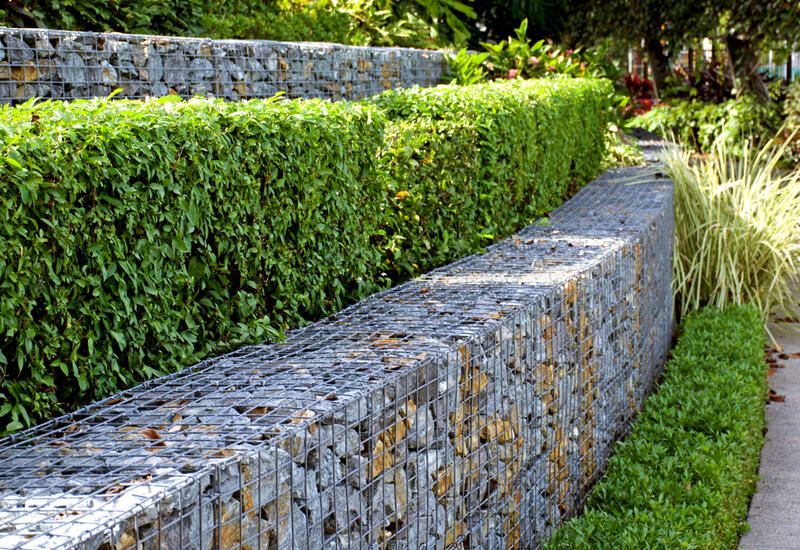Solve drainage issues with Steep hill landscaping techniques.
Achieve a Stunning Outside Sanctuary With Thoughtful Steep Hillside Landscaping Solutions
Changing a steep hillside into a captivating outdoor sanctuary presents unique challenges that call for cutting-edge landscaping services. By attending to issues such as disintegration control and access, one can produce a harmonious mix of beauty and functionality. Techniques such as terracing, the installment of preserving wall surfaces, and the selection of indigenous plants play crucial roles in this process. Additionally, incorporating water features can better enhance the landscape's allure. Recognizing the intricacies of these aspects is important for attaining an absolutely natural and inviting environment. What approaches will best suit your hill's specific qualities?
Understanding Steep Hillside Challenges
Landscape design on high hills provides special difficulties that require cautious consideration and strategic preparation. The disposition of the terrain can cause problems such as dirt disintegration, water overflow, and restricted accessibility, every one of which should be dealt with to produce a useful and aesthetically pleasing outside space.
One of the main interest in high hill landscaping is disintegration, which can arise from hefty rainfall or improper water drainage. This not just influences plant health and wellness however can also threaten the security of the slope. Implementing effective erosion control measures, such as growing ingrained vegetation or making use of compost, is necessary in protecting the honesty of the landscape.

Creating With Terracing Methods
To mitigate the challenges positioned by steep hills, incorporating terracing methods can be a reliable option. This design method changes a sloped landscape right into a collection of level, level locations, developing a visually striking and useful exterior room. Terracing not just assists to avoid dirt erosion yet also helps with better water drain, which is vital in keeping the health and wellness of plants and the security of the hillside.
When designing balconies, mindful consideration of the slope's angle and the soil type is necessary. Each balcony should be purposefully put to make the most of sunshine exposure while reducing the risk of runoff. The use of native plants on each degree can boost biodiversity, promote sustainability, and minimize upkeep demands. Additionally, incorporating paths in between balconies can enhance ease of access and motivate exploration of the landscape.
Terraced gardens can offer multiple objectives, consisting of vegetable production, decorative displays, or outside seating locations. By using products that mix sympathetically with the surrounding setting, the terracing can improve the total aesthetic appeal of the building. Eventually, thoughtful terracing changes steep hillsides right into functional, gorgeous rooms that invite communication and satisfaction.
Implementing Keeping Wall Surfaces
When confronted with the difficulties of high terrain, executing keeping wall surfaces can offer both structural assistance and visual enhancement to a landscape. These wall surfaces offer to stop soil disintegration, support inclines, and produce level areas for gardening or recreational usage. Steep hill landscaping. By successfully managing water drainage and decreasing dirt movement, maintaining walls shield your landscape investment while enhancing safety

Expert installment is essential to make sure the long life and effectiveness of preserving walls. Correct drainage systems should be incorporated to eliminate hydrostatic stress, preventing structural failure. Consulting with landscape professionals will certainly make certain that the style aligns with your total vision you could try here while sticking to neighborhood guidelines.
Finding Native Plants
Choosing native plants for your landscape style uses many environmental and visual advantages. Steep hill landscaping. Indigenous plants are adjusted to the neighborhood climate and soil problems, needing much less water and upkeep contrasted to non-native types. This adaptability not just saves sources but also promotes a much healthier ecological community, as indigenous plants support neighborhood wild animals, consisting of pollinators such as and butterflies
Incorporating native flora right into your steep hillside landscaping can improve soil stability, lowering erosion and promoting a balanced environment. Ingrained indigenous plants aid secure the dirt, making them excellent for sloped areas. These plants frequently exhibit lively shades and diverse appearances, creating an aesthetically attractive landscape that integrates with the surrounding atmosphere.
When picking native plants, consider their development habits, seasonal passion, and compatibility published here with other types. Organizing plants with comparable water and sunshine demands can result in an extra natural layout, while also streamlining maintenance. why not try here By selecting native plants, you not just grow a sustainable outside oasis however also contribute positively to the neighborhood biodiversity, making sure that your landscape grows for many years ahead.
Incorporating Water Attributes
Incorporating water functions right into your high hillside landscaping can substantially enhance both the visual allure and eco-friendly capability of the room. The noise of moving water creates a calm atmosphere, while aesthetically, it can serve as a prime focus that attracts the eye and includes deepness to the landscape.
When selecting water attributes, consider choices that enhance the natural shapes of your hill. Waterfalls, as an example, can cascade the slope, developing visual passion and advertising healthy drainage. Ponds can additionally be incorporated right into the layout, motivating local wild animals and offering environments for various varieties.
Furthermore, the placement of plants around these features is vital. Native aquatic plants not only enhance the elegance of the water feature yet also contribute to its environmental equilibrium by filtering pollutants and providing food for local animals.
Upkeep is an additional essential aspect; ensure that your water attribute is designed for very easy maintenance. A correctly constructed attribute will need minimal intervention, enabling you to delight in the beauty and serenity it offers without extreme labor. Ultimately, attentively incorporated water features can transform your high hillside landscape right into a captivating outside sanctuary.
Verdict
In conclusion, changing a steep hill into a lovely outside oasis demands thoughtful landscape design strategies that address erosion control and accessibility. The assimilation of terracing techniques, the implementation of preserving wall surfaces, and the choice of indigenous plants are crucial components of efficient layout.